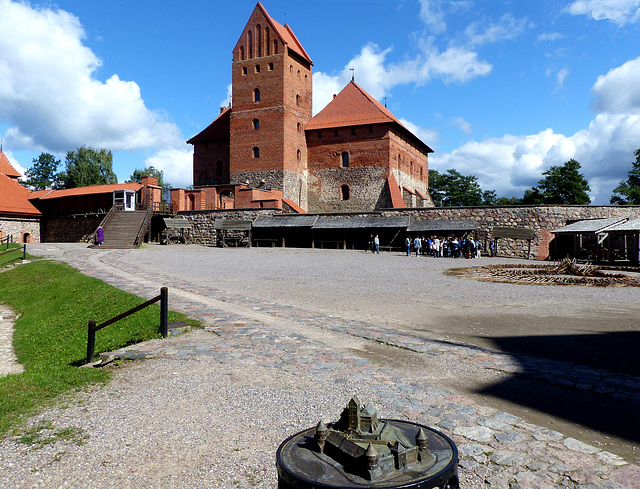Trakai - salos pilis
Trakai - salos pilis
Kaunas - Kristaus Prisikėlimo bazilika
Kaunas - Šv. arkangelo Mykolo bažnyčia
Kaunas - Šv. arkangelo Mykolo bažnyčia
Kaunas - Fire Station
Kaunas - Vending Machine
Kaunas
Kaunas - Šv. Pranciškaus Ksavero bažnyčia
Kaunas - Perkūno namas
Kaunas - Rotušė
Kaunas - Šv. apaštalų Petro ir Povilo arkikatedra…
Kaunas - Šv. apaštalų Petro ir Povilo arkikatedra…
Kaunas - Šv. apaštalų Petro ir Povilo arkikatedra…
Kaunas - Šv. apaštalų Petro ir Povilo arkikatedra…
Kaunas - Šv. Gertrūdos bažnyčia
Kaunas - Pilis
Kaunas - Laisvės alėja
Kaunas
Suwalki - Konkatedra św. Aleksandra
Suwalki - Konkatedra św. Aleksandra
Białystok
Białystok - Bazylika archikatedralna Wniebowzięcia…
Trakai - salos pilis
Lake Galvė
Trakai - Švč. Mergelės Marijos Apsilankymo bazilik…
Trakai - salos pilis
Vilnius - Rotušė
Vilnius - Aušros Vartų Dievo Motina
Vilnius - Aušros vartai
Vilnius - Šv. Teresės bažnyčia
Vilnius - Šv. Teresės bažnyčia
Vilnius - Šv. Teresės bažnyčia
Vilnius - Šv. Kotrynos bažnyčia
Vilnius - Dominikonų bažnyčia
Vilnius - Dominikonų bažnyčia
Vilnius - Šv. Kazimiero bažnyčia
Vilnius - Šv. Kazimiero bažnyčia
Vilnius - Šv. Mikalojaus Stebukladario palaikų Per…
Vilnius - Šv. Mikalojaus Stebukladario palaikų Per…
Vilnius - Art Nouveau
Vilnius - Georg Forster
Vilnius - Šv. Jono Krikštytojo ir Šv. Jono apaštal…
Vilnius - Astronomical Observatory
Vilnius - Dievo Motinos Ėmimo į Dangų soboras
Location
Lat, Lng:
You can copy the above to your favourite mapping app.
Address: unknown
You can copy the above to your favourite mapping app.
Address: unknown
See also...
Keywords
Authorizations, license
-
Visible by: Everyone -
All rights reserved
-
60 visits
Trakai - salos pilis


The town surrounded by many lakes developed in the 13th century. According to a legend, Grand Duke Gediminas discovered a beautiful lake-surrounded place not far from Kernavė, then the capital of the Grand Duchy, and decided to build a castle in the location. The name of Trakai was first mentioned in Teutonic Knights chronicles in 1337.
Later a castle was built on an island in Lake Galvė. This and a neighboring castle in the town suffered from attacks of the Teutonic Knights during which both wooden castles were raided by the Teutonic Knights several times in a row.
Despite this Trakai became a political and administrative centre of the Duchy. The construction of brick castles was finished and a church was built. In 1409, the town was granted city rights.
After the Grand Duchy of Lithuania joined the Kingdom of Poland in 1569, the castles remained royal property, but the town's importance declined. In 1477, the castle on the lake was a meeting place of King Casimir IV with Venetian envoys. After that, the castle became a prison. The castle then was refurbished by Sigismund I the Old, who set up his summer residence there; however, after his death in 1548 the castle gradually fell into disrepair.
During the wars between Russia and Poland between 1654 and 1667, the town was plundered and burnt. In the aftermath of the war with the Tsardom of Russia in 1655, both castles were demolished and the town's prosperity ended.
After WW I, the area became part of the Republic of Poland. In 1929, the Polish authorities ordered the reconstruction and restoration of the Trakai Island Castle. The works were almost complete in 1939 when the Invasion of Poland started and the area was soon annexed by the Soviet Union, then by Nazi Germany. During the war, more than 5,000 Jews from the Trakai region were murdered by the Nazis. In 1944. After WW II it was again annexed by the Soviet Union and made part of the Lithuanian SSR. The reconstruction was completed in the 1990s and by now is a major tourist attraction.
Later a castle was built on an island in Lake Galvė. This and a neighboring castle in the town suffered from attacks of the Teutonic Knights during which both wooden castles were raided by the Teutonic Knights several times in a row.
Despite this Trakai became a political and administrative centre of the Duchy. The construction of brick castles was finished and a church was built. In 1409, the town was granted city rights.
After the Grand Duchy of Lithuania joined the Kingdom of Poland in 1569, the castles remained royal property, but the town's importance declined. In 1477, the castle on the lake was a meeting place of King Casimir IV with Venetian envoys. After that, the castle became a prison. The castle then was refurbished by Sigismund I the Old, who set up his summer residence there; however, after his death in 1548 the castle gradually fell into disrepair.
During the wars between Russia and Poland between 1654 and 1667, the town was plundered and burnt. In the aftermath of the war with the Tsardom of Russia in 1655, both castles were demolished and the town's prosperity ended.
After WW I, the area became part of the Republic of Poland. In 1929, the Polish authorities ordered the reconstruction and restoration of the Trakai Island Castle. The works were almost complete in 1939 when the Invasion of Poland started and the area was soon annexed by the Soviet Union, then by Nazi Germany. During the war, more than 5,000 Jews from the Trakai region were murdered by the Nazis. In 1944. After WW II it was again annexed by the Soviet Union and made part of the Lithuanian SSR. The reconstruction was completed in the 1990s and by now is a major tourist attraction.
Paolo Tanino, Fred Fouarge have particularly liked this photo
- Keyboard shortcuts:
Jump to top
RSS feed- Latest comments - Subscribe to the comment feeds of this photo
- ipernity © 2007-2025
- Help & Contact
|
Club news
|
About ipernity
|
History |
ipernity Club & Prices |
Guide of good conduct
Donate | Group guidelines | Privacy policy | Terms of use | Statutes | In memoria -
Facebook
Twitter

Sign-in to write a comment.